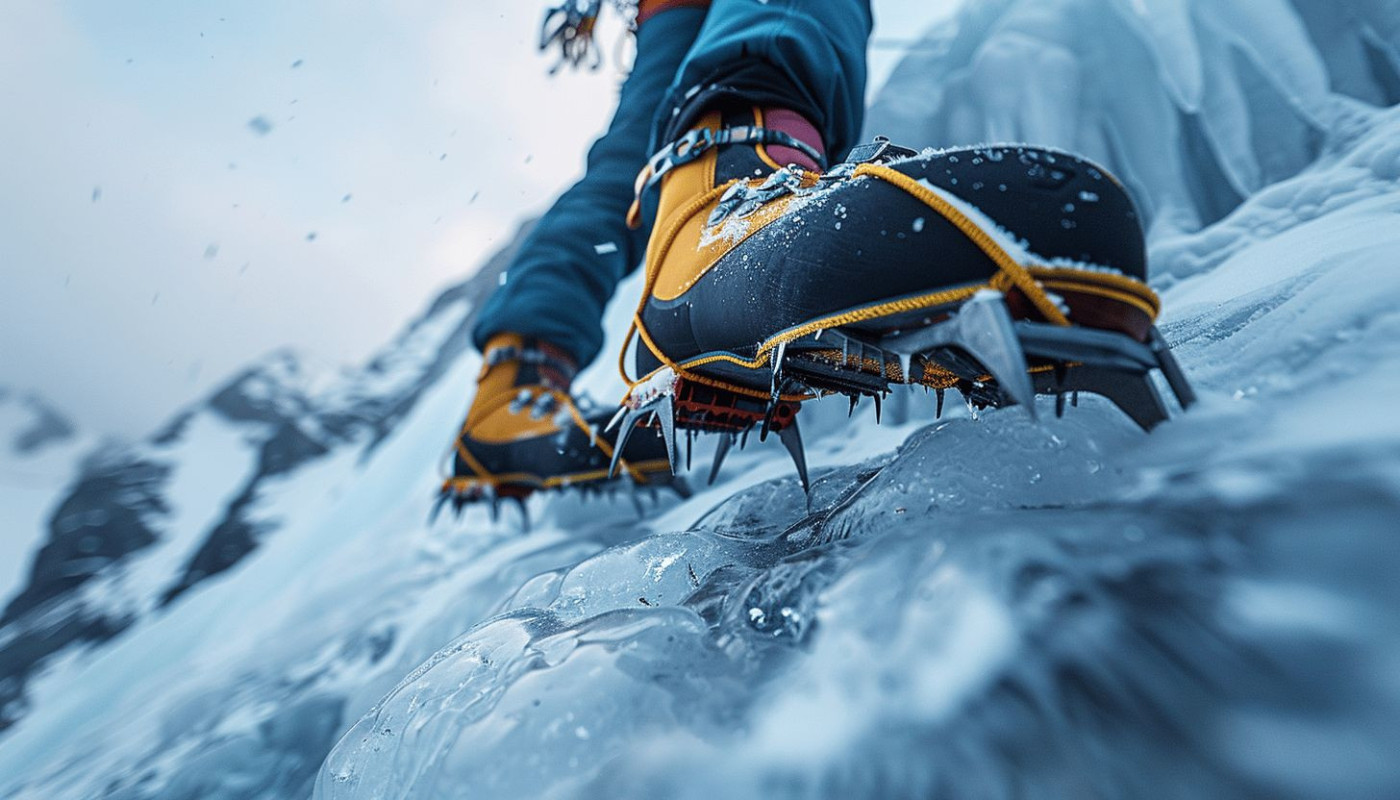Table of contents
Venturing into the icy vertical realm requires not only courage and skill but also the right gear to ensure a safe and successful ascent. Recent advancements in boot and crampon technology have significantly increased climbers' ability to maximize grip on the most treacherous ice surfaces. For enthusiasts eager to learn how to enhance their ice climbing experience, understanding these innovations is key. Read on to explore the cutting-edge developments that are changing the game in ice climbing gear and offering newfound levels of stability and precision on ice.
Understanding the Evolution of Ice Climbing Footwear
Ice climbing gear has undergone significant transformation to cater to the rigorous demands of the sport. Advances in footwear technology have played a pivotal role in enhancing climber safety and efficiency. The modern ice climbing boot is a marvel of design, integrating advanced materials that not only offer superior durability but also flexibility under extreme conditions. The choice of materials is vital, as they need to withstand sharp ice and rock while also providing thermal insulation to protect against the cold. Innovations in climbing boot design have led to the incorporation of Thinsulate insulation, a material that excels in keeping feet warm without adding unnecessary bulk.
Furthermore, the thermal properties of ice climbing boots have been a focal point, with manufacturers constantly improving the insulation to ensure climbers' feet remain at an optimal temperature. This is not just about comfort; it's about preventing frostbite and maintaining mobility in harsh conditions. The integration of these advanced materials with a keen eye on design intricacies has resulted in boots that are not only warm but also allow for precise movements, critical for tackling challenging ice routes. Overall, the evolution of ice climbing boots reflects a deep understanding of climbers' needs, leading to enhanced performance and a more enjoyable, safe climbing experience.
The Role of Crampon Compatibility
The interface between a climber's boots and crampons is a pivotal factor in establishing reliable traction on ice. Boot-crampon compatibility isn't simply about ensuring a secure fit; it's about maximizing the efficacy of every step taken on the precarious ice surfaces. As an experienced climbing gear designer, I've witnessed the evolution towards a modular crampon system. This progression caters to a climber's need for adaptable gear that responds to varying climbing conditions. The rise of customizable gear, specifically modular systems, allows climbers to make immediate adjustments to their crampons, enhancing grip and safety.
A precisely engineered micro-adjustment system is a testament to the sophistication found in contemporary crampon technology. This feature offers the climber an opportunity to fine-tune their crampons for optimal boot-crampon compatibility, leading to unparalleled ice climbing traction. The meticulous calibration facilitated by such systems ensures that the gear can adapt to the specific contours and sole rigidity of the boot, as well as the characteristics of the ice. This adaptability is invaluable, particularly when facing the ever-changing scenarios present in ice climbing. The marriage of boots and crampons through these advanced designs signifies a marked improvement in the way climbers approach and conquer icy terrains.
Material Advancements in Crampon Construction
The evolution of crampon construction has played a pivotal role in enhancing the capabilities of ice climbers. With the integration of lightweight crampons crafted from high-strength metals, climbers can now enjoy a significant upgrade in their climbing performance without compromising on agility. These advanced materials, often featuring durable climbing equipment, are a testament to the profound impact of technological progress in outdoor sporting gear. The alloy composition of these devices is now comparable to that used in aerospace industries, with some crampons utilizing aerospace-grade aluminum. This material choice not only sheds extraneous weight but also ensures a lasting toughness essential for the harsh conditions faced during climbs. The contributions of these materials to a climber's performance cannot be overstated, providing a secure grip on icy surfaces while also allowing for quick and precise movements. A materials scientist with expertise in high-performance sporting equipment would affirm the significance of these innovations, underscoring how they have revolutionized the landscape of ice climbing gear.
Enhancing Grip with Crampon Point Engineering
The evolution of crampon point technology represents a significant leap forward in the domain of ice climbing, marrying precision with perseverance. Modern advancements have honed crampon points to achieve a level of sharpness that allows for effortless ice penetration, an attribute that elevates climbing efficiency to new heights. Yet, a piercing tip is of little value without the resilience to withstand the harsh environment it must navigate. In this respect, the development of durable points underscores a commitment to sharpness longevity, ensuring climbers can rely on their gear from the ascent's start to its triumphant finish. This delicate balance is achieved through meticulous design and the use of high-quality materials that offer exceptional tensile strength, reinforcing the points against the brittle assault of ice. The insights of a mechanical engineer specialized in innovative climbing equipment would further illuminate how these tiny pinnacles of technology empower climbers to tackle glacial facades with increased confidence and security.
Future Trends in Ice Climbing Gear
The landscape of ice climbing is poised for a significant transformation as future climbing technology and innovative climbing equipment evolve. A futurist or innovation strategist with expertise in outdoor sports technology would point to smart materials as a game-changing factor in gear evolution. These next-gen materials could adapt to environmental changes, offering climbers enhanced safety and performance. For example, imagine boots with temperature-responsive soles that increase traction as the mercury drops, or crampons with sensors that adjust spike length and grip in real-time to the ice's hardness and texture. Such advancements could radically redefine the sport, making it not only safer but also more accessible to a broader range of enthusiasts. As materials become lighter, stronger, and more responsive, ice climbing gear will likely become less obtrusive, allowing athletes to push the boundaries of what's possible in this exhilarating sport.
Similar articles

Venturing into the unknown with extreme canyoning excursions

Behind The Scenes: The Excitement Of Hosting A Casino-Themed Event

